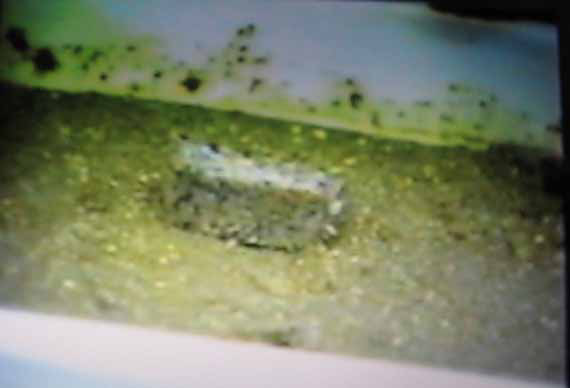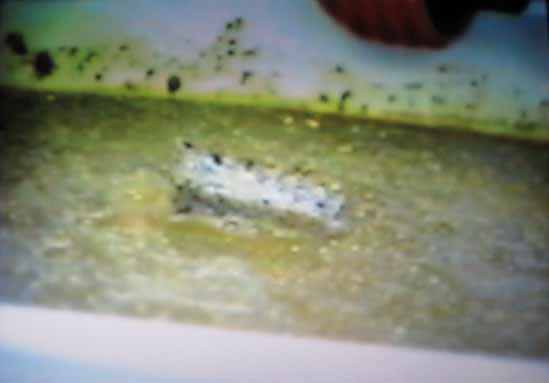実験のようす(静止画2枚:動画が再生できない場合のために掲載しました)
 図1. 水を含んだ砂を水平方向に圧縮すると,水は下に沈み表面が乾いた状態になる.その上にマッチ箱大の石材(花崗岩)を載せると,石材は表層の乾いた砂から垂直抗力を受けてつり合う(「浮いた』状態になる).
図1. 水を含んだ砂を水平方向に圧縮すると,水は下に沈み表面が乾いた状態になる.その上にマッチ箱大の石材(花崗岩)を載せると,石材は表層の乾いた砂から垂直抗力を受けてつり合う(「浮いた』状態になる).
Figure 1. When sand containing water is compressed horizontally, the water sinks to the bottom and the surface becomes dry. When a matchbox-sized stone (granite) is placed on top of it, the stone receives a vertical force from the dry sand on the surface and becomes balanced (it becomes "floating").
 図2. 振動を加えると砂より軽い水は浮き上がり,石は沈下する.
図2. 振動を加えると砂より軽い水は浮き上がり,石は沈下する.
Figure 2. When vibration is applied, water, which is lighter than sand, floats up, and stones sink.
|